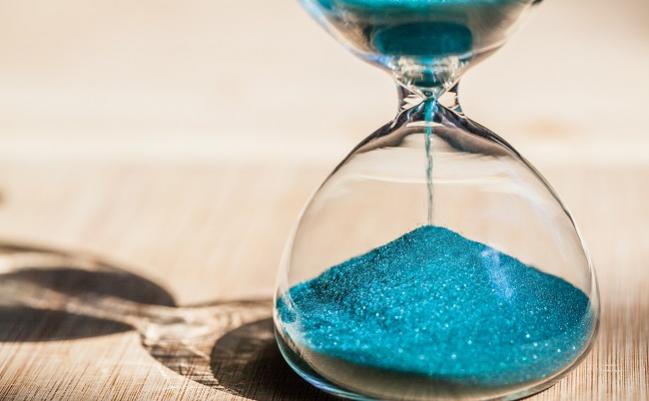Hemodynamics of First-Gen Sapien Valve Hold Up Well Over the Years: PARTNER Analysis
Although the study “is encouraging and reassuring, it must be considered only a starting point and not a definitive answer,” experts say.

Early hemodynamic improvements seen in patients implanted with the first-generation Sapien valve (Edwards Lifesciences) are mostly maintained through 3 years, with very few requiring reintervention or showing signs of severe abnormalities, according to data from the PARTNER trial. And among the patients who live to 5 years after their procedure, results are also largely positive, researchers found.
Published online earlier this week in JAMA Cardiology, the results were presented in part at TCT 2016 in Washington, DC. The new analysis includes a “substantially bigger” cohort with 5-year echocardiograms and offers further details on aortic regurgitation (AR), lead author Pamela S. Douglas, MD (Duke University Medical Center, Durham, NC), pointed out to TCTMD.
“Overall, [the full data set is] still very reassuring,” she said. “This is really the largest cohort of patients with any kind of heart valve who’ve been followed over this time period and with core-lab data. It’s really fabulous to be able to say that the instances of hemodynamic deterioration leading to valve replacement are very, very rare.”
One caveat, Douglas noted, is that the number of PARTNER patients who underwent surgical aortic valve replacement (SAVR) and survived to 5 years is quite small—49 people—so it’s difficult to draw many conclusions about how their results compare with those of patients who had TAVR.
In an editorial accompanying the paper, Stephen H. Little, MD, and Michael J. Reardon, MD (Houston Methodist Hospital, TX), point out what the data add to the field—among other things, more than 10,000 echocardiograms centrally interpreted by an imaging core lab. “To our knowledge, this impressive data analysis makes this one of the largest studies of prosthetic valve function ever reported,” they say.
Stable Hemodynamics, Few Reinterventions
Douglas et al analyzed hemodynamic results for patients who underwent TAVR (n = 2,482) or SAVR (n = 313) per protocol as part of PARTNER 1A, 1B, or the trial’s continued access registry. Mean age was 84.5, and 47% of patients were female.
Their calculations “showed small early favorable changes in the first few months post-TAVR, with a decrease of −2.9 mm Hg in aortic valve mean gradient, an increase of 0.028 in Doppler velocity index, and an increase of 0.09 cm2 in effective orifice area,” the researchers report, with “relative stability” seen at a median of 3.1 years.
However, 3.7% of TAVR patients had moderate/severe transvalvular AR, with the proportion of affected patients growing over time. Four of the six patients with severe AR died. By contrast, none of the surgically treated patients had severe and only two had moderate AR over follow-up.
Twenty TAVR patients (0.8%) underwent reintervention, among whom five required the repeat treatment due to structural deterioration of their Sapien valves. Within the SAVR group, one patient had a reintervention. “Severely abnormal hemodynamics on echocardiograms were also infrequent and not associated with excess death or reintervention for either TAVR or SAVR,” the investigators note.
Within the TAVR group, lower ejection fraction, stroke volume index, and aortic valve mean gradient were associated with higher death/reintervention risk up to 3 years, whereas Doppler velocity index and effective orifice area were not.
Five-year echocardiographic data were collected for 424 TAVR patients and 49 SAVR patients. Paired, serial echocardiograms for 399 TAVR-treated patients showed what the researchers describe as “favorable changes” between baseline and after the intervention and then “slight adverse changes” at 5-year follow-up.
‘No Echocardiographic Warning Signs’
For Little and Reardon, the take-home finding is “a very favorable hemodynamic profile with no significant valve deterioration during study follow-up, a clear demonstration of the excellent longitudinal durability of both TAVR and SAVR prostheses over this time. Importantly, there were no echocardiographic warning signs that it would be inappropriate to perform a long-term TAVR study in the lower-risk (younger age) population.”
Yet while they describe the study overall as “encouraging and reassuring,” the editorialists stress “it must be considered only a starting point and not a definitive answer.”
Among the elderly patients with limited lifespans who were enrolled in PARTNER, they say, it’s hard to truly assess whether TAVR follows the same timeline of durability as SAVR. But given that the two intermediate-risk trials have now extended their initially planned 5-year follow-up to 10 years and the two low-risk trials also will track patients for 10 years, “we will hopefully obtain significant insight on durability of both TAVR and SAVR valves,” they conclude.
Douglas agreed, noting that while the PARTNER data are a “milestone” by being the longest follow-up available for the early TAVR experience, the ongoing low-risk trials will provide firmer answers. “We’ll have better data 10 years from now,” she said, adding, “So far, so good.”
Moreover, Douglas observed that the original Sapien valve isn’t even commercially available anymore. “The newer valves actually show better hemodynamic performance—there’s less paravalvular leak, there’s a better seal, there’s better sizing. . . . There’s every reason to think they’re going to be as good or better,” she concluded.
Note: Several co-authors of the paper are faculty members of the Cardiovascular Research Foundation, the publisher of TCTMD.
Caitlin E. Cox is News Editor of TCTMD and Associate Director, Editorial Content at the Cardiovascular Research Foundation. She produces the…
Read Full BioSources
Douglas PS, Leon MB, Mack MJ, et al. Longitudinal hemodynamics of transcatheter and surgical aortic valves in the PARTNER trial. JAMA Cardiol. 2017;Epub ahead of print.
Little SH, Reardon MJ. Will transcatheter aortic valve replacement echo surgical aortic valve replacement durability? JAMA Cardiol. 2017;Epub ahead of print.
Disclosures
- The study was funded by Edwards Lifesciences.
- Douglas reports leading the PARTNER 1 echocardiography core laboratory.
- Little reports receiving grants from Medtronic and Abbott.
- Reardon reports serving on the advisory board for Medtronic.


Comments